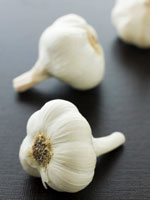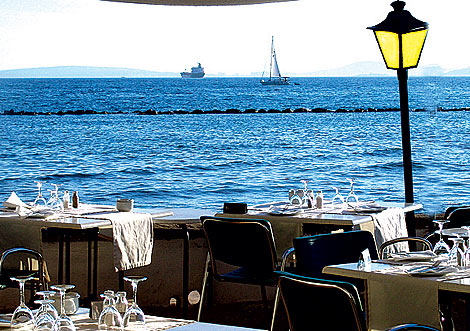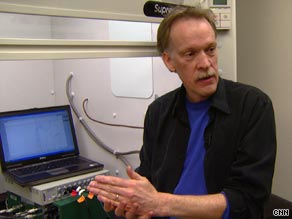MY DAILY LIVING, CONCERNS, INTERESTS, MOSTLY GOOD NEWS TO BRIGHTEN EVERYBODY UP.
Saturday, October 31, 2009
Thursday, October 29, 2009
In India's villages: No toilet, no bride
From Harmeet Shah Singh, CNN
October 29, 2009 -- Updated 0325 GMT (1125 HKT)

To meet its sanitation goal by 2012, India must build 112,000 toilets a day.
STORY HIGHLIGHTS
- To meet sanitation goal, India must build 112,000 toilets a day
- Less than 30 percent of people have latrine access
- Government offers incentives to build bathrooms
- Lack of toilet seen as human rights issue
RELATED TOPICS
"No toilet, no bride," has become a rallying cry for women raising a stink about the lack of a basic amenity.
They see it as a human rights issue, especially in villages where plumbing can be nonexistent.
It was that way in Sunariyan Kalan in the northern state of Haryana. Sumitra Rathi said village women had no choice but to relieve themselves without privacy.
They would go before sunrise or hold it in until darkness fell once again to avoid being seen. Or they would walk out to the fields and endure embarrassment. They don't want their daughters to face the same indignity.
"Many of them do make serious inquiries from the families of grooms about latrines," she said.
As a member of the local council, Rathi has helped build toilets in 250 houses in Sunariyan Kalan since 1996.
Still, about five dozen homes lack covered bathrooms.
The problem is so big in India that the country would need to construct 112,000 toilets every day if it wants to meet its sanitation goal by 2012, according to the Ministry of Rural Development.
Even as India emerges as a global economic power, millions of its citizens still live in poverty. The government estimates that less than 30 percent of villagers have access to latrines, which poses serious health risks and increases the threat of deadly diseases like typhoid and malaria.
To help overcome the enormity of the sanitation challenge, the government is offering incentives to encourage villagers to build bathrooms. The poorest
of the poor in Haryana stands to receive Rs. 2,200 ($48) for each toilet they install, said P.S. Yadav, a state coordinator for the sanitation campaign.
The incentives are especially attractive to women, for whom the problem transcends health issues.
Local women, often illiterate, have taken a keen interest in bathroom construction, said Roshni Devi, the council chief in Haryana's Kothal Khurd village.
And through it, they have gained a sense of self, making the lowly toilet seat feel more like a lofty throne.
Wednesday, October 28, 2009
Saturday, October 24, 2009
Friday, October 23, 2009
Thursday, October 22, 2009
Explore las estrellas en las 'Noches de Galileo'
Surcando el cosmos
ASTRONOMÍA | Del 22 al 24 de octubre en países de todo el mundo
 Imagen de la Galaxia de Barnard tomada desde un observatorio de Chile. | Foto: ESO
Imagen de la Galaxia de Barnard tomada desde un observatorio de Chile. | Foto: ESO- La iniciativa se enmarca en el Año Internacional de la Astronomía
- Habrá observaciones astronómicas, concursos, charlas y talleres
- El objetivo es despertar interés por el cielo entre las futuras generaciones
elmundo.es | Agencias | Madrid
Actualizado jueves 22/10/2009 18:52 horas
Alrededor de 40 agrupaciones de astrónomos amateur celebran desde el jueves 22 de octubre hasta el próximo sábado 24 'las Noches de Galileo' con más de 80 observaciones en diferentes calles y plazas españolas que mostraran al publico objetos celestes, como la Luna o Júpiter.
Esta iniciativa se repetirá en países de los cinco continentes que, al igual que España, conmemoran el Año Internacional de la Astronomía y la figura de Galileo Galilei.
Además de las más observaciones astronómicas, también se han organizado charlas y conferencias, talleres para aprender a usar un telescopio, acampadas, retransmisiones en directo de observaciones a través de Internet, sesiones de planetario, exposiciones y un concurso de astrofotografía.
Las Noches de Galileo constituyen la 'IV Fiesta de Estrellas' organizada en España a largo de este 2009. El objetivo es acercar la astronomía al público general y ayudar a despertar interés por el cielo y por esta ciencia entre las futuras generaciones.
Esta iniciativa se repetirá en países de los cinco continentes que, al igual que España, conmemoran el Año Internacional de la Astronomía y la figura de Galileo Galilei.
Además de las más observaciones astronómicas, también se han organizado charlas y conferencias, talleres para aprender a usar un telescopio, acampadas, retransmisiones en directo de observaciones a través de Internet, sesiones de planetario, exposiciones y un concurso de astrofotografía.
Acercar la astronomía al público
Los aficionados a esta modalidad fotográfica tendrán la oportunidad de competir en el Concurso Internacional de Astrofotografía puesto en marcha con motivo de esta celebración y organizado en colaboración con Europlanet. Los interesados en participar podrán hacerlo en dos categorías: 'Tierra y cielo', con imágenes que destaquen la interrelación entre nuestro planeta y nuestros vecinos astronómicos, y 'Más allá de la Tierra', donde se encuadran las fotografía que muestren uno o más objetos galileanos, sin captar ningún aspecto de nuestro planeta.Las Noches de Galileo constituyen la 'IV Fiesta de Estrellas' organizada en España a largo de este 2009. El objetivo es acercar la astronomía al público general y ayudar a despertar interés por el cielo y por esta ciencia entre las futuras generaciones.
Agatha Christi
I like living. I have sometimes been wildly, despairingly, acutely miserable, racked with sorrow, but through it all I still know quite certainly that just to be alive is a grand thing.
Agatha Christie
Agatha Christie
Wednesday, October 21, 2009
Apple redesigns iMac, MacBook and reveals Magic Mouse
October 20, 2009 -- Updated 1947 GMT (0347 HKT)
By Rich Brown and Dan Ackerman

Apple has made a wireless mouse and keyboard the default options, and both have received redesigns.
The biggest news Tuesday will be the new iMacs, which move from aluminum and polycarbon design to aluminum and edge-to-edge glass, mirroring the look of Apple's line of MacBook Pro laptops. The new iMac will come in 21.5 (1,920x1,080) and 27-inch (2,560x1,440) models, each with a 16:9 aspect ratio.
Starting price for the 21.5-inch model is $1,199, with the 27-incher beginning at $1,699. Apple will also offer step-up models for each screen size, coming in at $1,499 for the beefier 21.5-inch model, and $1,999 for the higher-end 27-inch iMac.
As for specs, Apple has mostly opted for raw speed over adding more processing cores. All but the $1,999 iMac come with Intel Core 2 Duo chips, but the CPU speed in the lowest model now starts at 3.06GHz. That used to be the fastest chip available in Apple's previous highest-end iMac.
The one exception is the $1,999 iMac, which starts with Intel's most recent quad-core chip, the core i5 at 2.66GHz, and upgrade options for that model go all the way to the even faster Core i7 at 2.8GHz.
Other new iMac features are relatively straightforward for the systems themselves. There's no Blu-ray option, as was rumored, but you do get an SD Card slot on all new iMacs.
The 27-inch version also lets you use its mini-Display Port input as a video input (via a dongle from Belkin), which means you can use the larger iMac as a second monitor. The GeForce 9400M remains the standard graphics chip, with upgrades available to Radeon HD 4670 and Radeon HD 4870 chips. Storage options go as high as 2TB on the 27-inchers.
13-inch Unibody Polycarbonate
MacBook Apple has also revamped its best-selling laptop, the 13-inch MacBook. The new version retains the white polycarbonate look, as well as the $999 price.
With every other laptop in Apple's current lineup using the "Pro" moniker, the single non-Pro MacBook was starting to look a bit dated. While many industry watchers expected Apple to lower prices on the white polycarbonate version, the company has given the system an upscale makeover, keeping the price the same.
Like the aluminum MacBook Pro models, the MacBook now has a unibody chassis, although in this case, it's still made of polycarbonate. A separate bottom panel has a matte non-slip feel, as opposed to the glossy white upper body. The unibody construction means the battery is no longer removable--also like the current Pro lineup.
We got a chance to get our hands on one of the new MacBooks this morning. While still recognizably a MacBook, the new version has more gently rounded edges on the lid, making it look slightly thinner from a side angle.
The touch pad is the same large glass multitouch version found on the MacBook Pros, and is dominated by the wrist rest. Also like the Pro versions, the 13.3-inch display is now LED backlit, which is better for both power consumption and environmental concerns.
Internal components, including the Nvidia GeForce 9400, are either the same, or very similar to, current models. Some features found in the 13-inch MacBook Pro that you won't find in this new MacBook include the SD card slot and backlit keyboard.
While consumers have long called for lower entry prices for Mac laptops, Apple has always been reluctant to stray into the lower-margin sub-$1,000 market. With this new upscale version of the MacBook, Apple is giving a slight recessionary nod to buyers, without having to dive into the Netbook price wars.
The new Magic Mouse and wireless keyboard
You'll also find new peripherals in the box with a new iMac. Apple has made a wireless mouse and keyboard the default options, and both have received redesigns.
The keyboard now has an all aluminum body, but the new mouse, dubbed the Magic Mouse, is far more interesting. The sleek, touch capacitive design behaves similarly to the track pad on Apple's laptops.
Of course the standard two-button usage model works as you'd expect, but you can also simply drag your finger down the middle of the mouse to scroll up and down. It also supports accelerated scrolling, like the iPhone, along with a few gestures for lateral and 360-degree movement, depending on the application. A new aluminum body Apple Remote is also available as a $16 extra
New Mac Mini Finally, Apple gave a nod to the Mac Mini. The core design remains the same for the most part, with a few minor tweaks to its CPU, memory, and hard-drive capacity.
Prices remain the same at $599 and $799. Far more interesting is the new server iteration of the Mac Mini. This model starts at $999, and instead of a DVD burner, you get the Snow Leopard version of OS X Server, along with two 500GB hard drives.
All of these new products are available today, except for the Core i5-based iMac, which goes on sale in November. We'll also be posting hands-on slideshows and videos of the new MacBook and the new 27-inch iMac shortly, so stay tuned.
Tuesday, October 20, 2009
The Secret
Begin your day by feeling grateful. Be grateful for the bed you just slept in, the roof over your head, the carpet or floor under your feet, the running water, your shower, your clothes... the car that you drive, your job, your friends. Be grateful for the weather, the sun, the sky, the birds, the trees, the grass, the rain, and the flowers. Thank you, thank, you, thank you! (The Secret Daily Teachings)
Monday, October 19, 2009
Chocolate...the Healthy Indulgence!

The benefits of being a chocolate lover
From Health magazineThis ultimate feel-good food keeps your heart healthy, mood up, and body in great shape.
Find out what all this natural ingredient can do for you.
Next page: Heart helper
- Slide 1 of 5
- Previous
- Next
Sunday, October 18, 2009
Google says recession worst is over
- Story Highlights
- Google declares worst of the recession over
- Statement paves the way for a return to heavy spending on expansion
- Search engine giant reporting a strong 8 percent jump in net revenues
October 16, 2009 -- Updated 0852 GMT (1652 HKT)
By Richard Waters

Google has reported an 8 percent jump in revenues.
While search engine advertising has held up better than most other forms of online media in the downturn, Eric Schmidt, chief executive, said the advertising revival appeared to have spread across the internet more broadly.
The news pushed the company's shares up 3 per cent in after-market trading, to $544, capping a run that has seen the shares climb 120 per cent from the bottom late last year.
The figures for the three months to the end of September point to a return to sequential quarterly growth for the search giant after two periods in which its revenues were either flat or down from the preceding quarter, the first time in its 10-year history it had been through such a decline. Investors often pay close attention to sequential quarterly comparisons for high-growth companies since they provide a more immediate view of the growth trajectory.
Drawing a clear line after the downturn, Mr Schmidt praised the company's management team for holding down costs in recent quarters but said the time had come for a return to the company's earlier ambitious expansion path.
Don't Miss
Wall Street grew frustrated with Google as its headcount soared and costs appeared out of control in the middle of this decade, but the group, under a new chief financial officer, proved more adept at putting the lid on spending in the downturn.
Google's rebound in the third quarter also reflected a partial recovery in its pricing power. The company said that its average cost-per-click -- the amount advertisers pay each time a user clicks on their ads -- rose 5 per cent compared with the second quarter of this year, though the figure was still 6 per cent lower than a year before.
The company reported revenues of $4.38bn, after deducting $1.56bn in traffic acquisition costs it pays to other website operators. Net income climbed 27 per cent to $1.64bn, while earnings a share reached $5.89 on the pro-forma basis on which Wall Street judges the company.
Analysts had been expecting Google to report pro-forma earnings of $5.35 a share on revenues of $4.24bn, compared with the $4.92 a share and $4bn it reported a year ago.
The decline in the dollar since the end of June contributed to the rebound from the preceding quarter, since it raised the value of the 53 per cent of Google's revenues that are earned outside the US.
Saturday, October 17, 2009
Anger, stress may be linked to heart problems
- Story Highlights
- Changes brought on by anger and other strong emotions can predict arrhythmias
- Experts: Anger management is important for heart health
- Exercise elevates heart rate much more than mental stress does
July 29, 2009 -- Updated 1925 GMT (0325 HKT)
(CNN) -- When you get angry, the stress isn't restricted to your head. New research shows that anger actually triggers electrical changes in the heart, which can predict future arrhythmias in some patients.

Anger management may be key for patients with heart problems, researchers say.
Arrhythmias, which are heart rhythm problems, happen because of a malfunction in the electrical impulses in your heart that coordinate heart beats, according to the Mayo Clinic. The result is that your heart beats too fast, too slow or irregularly.
Some arrhythmias may increase a person's risk of stroke or congestive heart problems.
This study is relevant to people who have heart disease already, said study author Dr. Rachel Lampert, associate professor at Yale University School of Medicine.
"Perhaps if we treat them with something like stress management or anger management, we may decrease the likelihood of arrhythmias," she said.
Previous research has shown that the rate of sudden cardiac death increases when the population is collectively stressed, such as during an earthquake or war, Lampert said.
Other studies have also shown that if you ask patients about what happened before a heart attack, they'll most frequently say they were angry, said Dr. Charles Raison, psychiatrist and director of the Mind/Body Institute at Emory University in Atlanta, Georgia.
"It is just indisputable that negative emotionality -- especially anger and misery, depression -- are terrible for your heart," he said.
Don't Miss
The patients were asked to describe a time in the previous couple weeks when they felt angry or aggravated, and were prompted with questions to describe the moment vividly. Researchers looked at the heart's electrical stability through a measure called T-wave alternans.
"Overall in the group, when we did the anger recall protocol, the group as a whole showed an increase in electrical instability," Lampert said.
Researchers then compared the top 25 percent of people -- those who showed the most instability -- with the others in the group and found that the the ones with the highest instability in the lab were 10 times more likely to experience an arrhythmia sometime in the next three years.
The idea could be used as a predictive test for people who are unable to take an exercise-induced electrical stability test, Lampert said.
More study is needed to see how the mental stress test relates to traditional exercise testing, said Dr. Eric Rashba, professor of medicine at Stony Brook University Medical Center in Stony Brook, New York. Rashba was not involved in the study. The new test may be useful in combination with the exercise test, he said.
While this is an early study with a small sample size, it is the first time this type of anger or emotional stress testing has been shown to correlate with future arrhythmias, he said.
Exercise elevates heart rate much more than mental stress does, meaning the effects of mental stress on the heart may be caused by adrenaline impacting the heart cells, the study authors said.
Health Library
Anger management has two major components: behavioral and pharmacological, Raison said.
Within the behavioral approach, one strategy is to help people understand the reasons behind their anger, including the anger that they had in childhood, which may carry over to adulthood. After going through this therapy, people have a better sense of what happened to them in their lives and stop associating everything with upsetting events from the past.
"They stop looking at the present constantly through the eyeglasses of the past, and when that happens, the things in the present don't anger them that much," he said.
Another strategy involves exploring ways to more constructively deal with anger. The Mayo Clinic offers these anger management tips, which include taking a "time out," working with the person who made you angry, forgiving others and keeping an anger log to identify circumstances that make you angry.
Meditating and exercise are other ways to reduce anger, Raison said.
There is also evidence that certain drugs that work for depression, called selective serotonin reuptake inhibitors, make people who don't have depression less irritable, Raison said.
Still, more work needs to be done to demonstrate an underlying causal relation between heart problems and anger, or, alternatively, if there is a third factor that causes both -- for example, inflammation plays roles in both cardiac disease and anger, he said.
Friday, October 16, 2009
Sinking island inspires Cabinet meeting – underwater
Posted: 1114 GMT
(CNN) — The President of the Maldives is to chair an underwater Cabinet meeting tomorrow to highlight the threat global warming and rising sea levels pose to his low-lying nation.
President Mohamed Nasheed and 14 of his government ministers will don scuba gear and descend to a table six meters underwater.
To prepare, the ministers have been learning the basics of scuba diving on the weekends. Nasheed already is a certified diver.
Read more about the watery meeting
The Maldives is the lowest-lying country on the planet, with the majority of the island’s landmass less than two meters above sea level. Its highest point is only just over the height of an average man above the waters of the surrounding Indian Ocean.
Earlier this year President Nasheed announced he was looking to relocate the country to new lands — possibly in India, Sri Lanka or Australia — and was putting aside funds from the island’s main source of income, tourism, for that purpose.
Nasheed is also looking to the climate change conference in Copenhagen at the end of the year to help the islands with the problem of rising sea levels.
President Nasheed will be on Connect the World tonight. Send us your thoughts and comments on the Maldives, underwater cabinet meetings and climate change, and we’ll include the best in the show tonight.
President Mohamed Nasheed and 14 of his government ministers will don scuba gear and descend to a table six meters underwater.
To prepare, the ministers have been learning the basics of scuba diving on the weekends. Nasheed already is a certified diver.
Read more about the watery meeting
The Maldives is the lowest-lying country on the planet, with the majority of the island’s landmass less than two meters above sea level. Its highest point is only just over the height of an average man above the waters of the surrounding Indian Ocean.
As sea levels have risen over 20 centimeters in the last century, scientists predict that by the end of this century the Maldives may be uninhabitable — a modern day Atlantis consumed by the sea.
Earlier this year President Nasheed announced he was looking to relocate the country to new lands — possibly in India, Sri Lanka or Australia — and was putting aside funds from the island’s main source of income, tourism, for that purpose.
Nasheed is also looking to the climate change conference in Copenhagen at the end of the year to help the islands with the problem of rising sea levels.
President Nasheed will be on Connect the World tonight. Send us your thoughts and comments on the Maldives, underwater cabinet meetings and climate change, and we’ll include the best in the show tonight.
Protect Your Heart With Fresh Garlic
Weekly advice from our herbs and alternatives expert

By Sara Altshul
I think it’s safe to say that you’ll never need to use garlic to repel an old-school vampire. Plus, 21st-century vamps are so cute that I’m not sure I’d want to repel any of them. (I’m looking at you, True Blood Bill.)But here’s a new garlic discovery I hope you will make use of: Researchers have discovered why freshly crushed garlic protects your heart.
That garlic has health benefits is nothing new. Since at least 1500 BC, healers in China and India have used the odiferous bulb as a blood thinner. Hippocrates, the father of modern medicine, used it to treat cervical cancer. Louis Pasteur reported on garlic’s antibacterial and antifungal powers, which inspired Albert Schweitzer to use it against dysentery in Africa.
But now, a team of researchers from the Cardiovascular Research Center at the University of Connecticut School of Medicine have learned how freshly crushed garlic—as opposed to dried or cooked garlic—protects the heart.
Why is fresh garlic better?
“Freshly crushed garlic generates hydrogen sulfide, a gas that is also generated from rotten egg,” says study coauthor Dipak K. Das, PhD, ScD, a professor and director at the Cardiovascular Research Center. “Although this gas in excess may become poisonous, in small quantities it functions as an intracellular signaling compound and can protect the heart.”
Because the hydrogen sulfide is a short-lived gas, it disappears when garlic is dried, processed, or cooked, he adds. Dried or processed garlic does retain its antioxidant effects, however, and helps protect against free radical damage—but not to the extent that fresh garlic does.

(Getty Images)
Tips for using fresh garlic
The amount of garlic you need to get the heart-healthy benefits is about a clove a day. According to Herbal Therapy & Supplements, a handy guide by herbalists David Winston and Merrily A. Kuhn, RN, PhD, the best way to use garlic is to mince a clove, let it stand 10 to 15 minutes, then mix it with yogurt, applesauce, honey, or some other carrier agent. If you eat some parsley afterward, it will help control garlic breath.
Baby survives after falling under train
- Story Highlights
- Baby survives after stroller rolls off railway station platform and into path of train
- Baby and stroller were dragged 30 meters further up track
- Distraught mother and baby reunited; baby suffered only a cut to forehead
updated 5 minutes ago

The stroller rolling towards the edge of the platform.
The footage shows the baby's mother momentarily letting go of the stroller, which then rolls over the edge of the platform. Second later, a train pulls in to the station.
The stroller and baby were dragged 30 meters further up the track before the train came to a halt.
John Rees, a spokesman for train operator Connex, told Australia's Channel 7 television station: "It's a miracle this baby wasn't killed. The baby managed to escape with just a cut to the forehead, I'm told. It's a complete miracle."
The baby boy was quickly reunited with his distraught mother. He was taken to Melbourne's Royal Children's Hospital but was later discharged.

Victoria state police sergeant Michael Ferwerda told Channel 7: "Parents especially need to be vigilant especially with toddlers."

0:00
/
0:01
Baby survives hit by train 1:21
A baby miraculously survives after his stroller falls under a Melbourne train. Seven Network's Dean Felton reports.
Source: SEVENNET | Added October 16, 2009
A baby miraculously survives after his stroller falls under a Melbourne train. Seven Network's Dean Felton reports.
Source: SEVENNET | Added October 16, 2009
Embed this video
Copy and paste this code into your blog/website
Or click on the button to copy the code
Share this video

The story
A six-month-old baby had a miraculous escape after his stroller rolled off a railway station platform and into the path of an incoming train.The incident, which happened Thursday at Ashburton railway station in Melbourne, Australia, was captured by CCTV.
The footage shows the baby's mother momentarily letting go of the stroller, which then rolls over the edge of the platform. Second later, a train pulls in to the station.
Thursday, October 15, 2009
Cuando el cáncer pasa de la madre al feto
CASO EXCEPCIONAL
- La placenta ejerce una barrera eficaz, por lo que la transmisión es muy rara
 Un feto en el útero materno. (El Mundo)
Un feto en el útero materno. (El Mundo)Actualizado martes 13/10/2009 08:12 (CET)
CRISTINA G. LUCIO
MADRID.- En los últimos 100 años, la literatura médica había registrado al menos 17 casos de un extraño suceso: la posible transmisión de un cáncer de una madre embarazada a su futuro bebé. Como si de un contagio se tratara, los pequeños desarrollaban exactamente el mismo trastorno que padecía su progenitora. Sin embargo, hasta la fecha, no se había podido demostrar con pruebas fehacientes esta transferencia.
Después de analizar el reciente caso de una joven japonesa (a la que le diagnosticaron una leucemia durante el periodo de gestación) y su pequeña (que desarrolló la enfermedad poco tiempo después de nacer), un equipo de investigadores pudo seguir la pista genética de esta transmisión materno-filial. Su investigación la publican en las páginas de 'Proceedings of the National Academy of Sciences'.A través de varios análisis, los científicos -dirigidos por Mel Greaves, del Instituto de Investigación sobre el Cáncer (Reino Unido)-, lograron demostrar que las células cancerosas que presentaba el bebé eran idénticas a las su madre y poseían el mismo origen. Un examen realizado a las muestras sanguíneas tomadas al recién nacido tras el parto indicaron que ya presentaba las células malignas en su nacimiento.
Posteriores evaluaciones pusieron de manifiesto que las células malignas del bebé carecían de una región del ADN que permitiría identificarlas como un elemento extraño por parte del sistema inmune del organismo.
"La inmunidad del feto normalmente destruye cualquier célula que no es suya. Éste es uno de los motivos por los que la transmisión del cáncer es excepcional", explica a elmundo.es Ander Urruticoechea, especialista del Instituto Catalán de Oncología (ICO). "En este caso concreto se trata de un tipo de leucemia que el feto no ha podido reconocer y, por eso no lo ha detectado", añade.
Por otro lado, este experto advierte de que "en el caso excepcional de que pase alguna célula cancerígena al feto, éste no tiene por qué desarrollar la enfermedad. Lo que ha ocurrido con la mujer japonesa y su hija es que han pasado muchas células"
La barrera de la placenta
Según sugieren los investigadores, esta mutación genética observada en el bebé podría haber hecho posible que el cáncer traspasara la protección de la placenta y escapara al sistema de alertas de las defensas."Lo excepcional de estas transmisiones de un cáncer de la madre al feto testimonian la eficacia de la placenta como barrera", subrayan los autores.
Para Urruticoechea, "además de la inmunidad del feto y de su capacidad para rechazar agentes que no son suyos, la placenta ejerce un tapón muy importante para que no traspase nada. Tiene vasos sanguíneos muy efectivos a la hora de separar células de la madre y del feto", afirma.
De hecho "estos casos son muy extraños. Es algo anecdótico. Nunca se ha visto por ejemplo con un cáncer de mama", dice el especialista del ICO.
Mera coincidencia
Vidas.zip
por Lorenzo Silva
por Lorenzo Silva
RELATOS | Vidas.zip
 Foto: Íñigo Morales de Rada
Foto: Íñigo Morales de RadaLorenzo Silva |
Actualizado jueves 15/10/2009 10:30 horas
La mujer miró a la pareja con gesto displicente. Y eso que se suponía que las estrellas Michelin se concedían entre otras cosas por la amabilidad en el trato al cliente. "Voy a ver", dijo, y giró sobre sus talones para emprender un lentísimo avance hacia la cocina, sintiendo sin duda el placer de darles la espalda de forma sostenida a quienes acababan de dirigirse a ella.
Al cabo de un minuto, regresó con el mismo paso solemne y el gesto altivo con que se había separado de ellos. Aguardó hasta llegar a su altura para informarles del resultado de su pesquisa. Ni siquiera abrió la boca. Se limitó a menear la cabeza. La pareja se encogió de hombros. Bien mirado, hacía un día demasiado hermoso, bajo aquella inusual luz azul del Cantábrico, para apenarse por tan nimio contratiempo. Habían visto el letrero que anunciaba el restaurante del famoso cocinero desde la carretera, y aunque no tenían reserva y sabían que así era improbable encontrar sitio, y más con la muchedumbre de turistas que se apiñaba a la entrada del establecimiento, habían entrado a preguntar por si acaso. Por preguntar, nada se pierde. Ya habría más sitios donde comer en condiciones, y tampoco pasaba nada por perderse aquella experiencia respecto de la que no habían tenido tiempo de crearse la menor expectativa.
De modo que siguieron camino, contemplando el mar encalmado que se extendía infinito a su derecha, disfrutando de aquel sol que reventaba las costuras de las nubes e invitaba sin más a vivir. Pararon en el siguiente pueblo, cuna de un navegante cuya hazaña hoy no recordaba ya casi nadie, pero que en su tiempo había sido inmensa, y sobradamente celebrada en siglos posteriores.
Visitaron su monumento, presa de un desconcertante abandono, y sin prisa buscaron, bajando por las empedradas callejas, el borde del mar. Allí vieron varios restaurantes, donde podrían desquitarse del desplante sufrido en el del célebre 'chef'.
En particular les atrajo uno que parecía lo contrario de lo que les había parecido el otro. Tranquilo, nada bullicioso, y más que a propósito para disfrutar de un placentero almuerzo.
Cuando entraron, comprobaron que sólo unas pocas mesas estaban ocupadas. Cuando vieron los platos, decidieron que no tenía nada que envidiarle a ningún otro. Cuando les atendieron, descubrieron que eran compatibles la excelencia culinaria y la amabilidad. Pero aún faltaba lo mejor. Ella se había sentado de espaldas, y él padecía de un astigmatismo para el que se resistía a usar gafas. Por eso no lo vieron en seguida.
Al cabo de unos minutos, sin embargo, le dio a él la impresión de reconocer a uno de los comensales de una de las mesas. Se fijó mejor y de pronto no le cupo ninguna duda. Paladeó un sorbo del frío vino blanco que habían pedido y le dijo a ella, sonriente: –Mira quién está en esa mesa, cuando puedas. Ella se volvió discretamente y al principio tampoco lo reconoció. Pero luego miró a su compañero de mesa con los ojos abiertos como platos. Sacudió la cabeza y dijo: –No me lo puedo creer.
Era el cocinero. Tras habérseles negado la posibilidad de probar en su atestado local la comida preparada por sus subalternos, allí estaban, donde comía él. Alzaron sus copas. No podía ser mejor augurio para la vida que empezaban en común.
Al cabo de un minuto, regresó con el mismo paso solemne y el gesto altivo con que se había separado de ellos. Aguardó hasta llegar a su altura para informarles del resultado de su pesquisa. Ni siquiera abrió la boca. Se limitó a menear la cabeza. La pareja se encogió de hombros. Bien mirado, hacía un día demasiado hermoso, bajo aquella inusual luz azul del Cantábrico, para apenarse por tan nimio contratiempo. Habían visto el letrero que anunciaba el restaurante del famoso cocinero desde la carretera, y aunque no tenían reserva y sabían que así era improbable encontrar sitio, y más con la muchedumbre de turistas que se apiñaba a la entrada del establecimiento, habían entrado a preguntar por si acaso. Por preguntar, nada se pierde. Ya habría más sitios donde comer en condiciones, y tampoco pasaba nada por perderse aquella experiencia respecto de la que no habían tenido tiempo de crearse la menor expectativa.
De modo que siguieron camino, contemplando el mar encalmado que se extendía infinito a su derecha, disfrutando de aquel sol que reventaba las costuras de las nubes e invitaba sin más a vivir. Pararon en el siguiente pueblo, cuna de un navegante cuya hazaña hoy no recordaba ya casi nadie, pero que en su tiempo había sido inmensa, y sobradamente celebrada en siglos posteriores.
Visitaron su monumento, presa de un desconcertante abandono, y sin prisa buscaron, bajando por las empedradas callejas, el borde del mar. Allí vieron varios restaurantes, donde podrían desquitarse del desplante sufrido en el del célebre 'chef'.
En particular les atrajo uno que parecía lo contrario de lo que les había parecido el otro. Tranquilo, nada bullicioso, y más que a propósito para disfrutar de un placentero almuerzo.
Cuando entraron, comprobaron que sólo unas pocas mesas estaban ocupadas. Cuando vieron los platos, decidieron que no tenía nada que envidiarle a ningún otro. Cuando les atendieron, descubrieron que eran compatibles la excelencia culinaria y la amabilidad. Pero aún faltaba lo mejor. Ella se había sentado de espaldas, y él padecía de un astigmatismo para el que se resistía a usar gafas. Por eso no lo vieron en seguida.
Al cabo de unos minutos, sin embargo, le dio a él la impresión de reconocer a uno de los comensales de una de las mesas. Se fijó mejor y de pronto no le cupo ninguna duda. Paladeó un sorbo del frío vino blanco que habían pedido y le dijo a ella, sonriente: –Mira quién está en esa mesa, cuando puedas. Ella se volvió discretamente y al principio tampoco lo reconoció. Pero luego miró a su compañero de mesa con los ojos abiertos como platos. Sacudió la cabeza y dijo: –No me lo puedo creer.
Era el cocinero. Tras habérseles negado la posibilidad de probar en su atestado local la comida preparada por sus subalternos, allí estaban, donde comía él. Alzaron sus copas. No podía ser mejor augurio para la vida que empezaban en común.
Scientists hope work with poison gas can be a lifesaver
- Story Highlights
- Theory: Death caused not by lack of oxygen but by reactions to dropping oxygen levels
- Scientist says tiny amount of toxic hydrogen sulfide can stop cell death
- Biologist hopes to create drug for use in conventional medical settings
- Work inspired by death of researcher's young daughter
October 15, 2009 -- Updated 1624 GMT (0024 HKT)
By Caleb Hellerman
CNN Senior Medical Producer
CNN Senior Medical Producer
Guiding the visitors at the Fred Hutchinson Cancer Research Center is Mark Roth, a 50-year-old biologist with a tall forehead, thinning red hair and a perpetual wry smile. He asks his assistant, Jennifer Blackwood, if the rat is ready. It is. She turns a dial, and the sealed enclosure starts to fill with poison gas -- hydrogen sulfide. An ounce could kill dozens of people.
The rat sniffs the air a few times, and within a minute, his naturally twitchy movements are almost still. On a monitor that shows his rate of breathing, the lines look like a steep mountain slope, going down.
At first glance, that looks bad. We need oxygen to live. If you don't get it for several minutes -- for example, if you suffer cardiac arrest or a bad gunshot wound -- you die. But something else is going on inside this rat. He isn't dead, isn't dying. The reason why, some people think, is the future of emergency medicine.
You see, Roth thinks he's figured out the puzzle. "While it's true we need oxygen to live, it's also a toxin," he explains. Scientists are starting to understand that death isn't caused by oxygen deprivation itself, but by a chain of damaging chemical reactions that are triggered by sharply dropping oxygen levels.
The thing is, those reactions require the presence of some oxygen. Hydrogen sulfide takes the place of oxygen, preventing those reactions from taking place. No chain reaction, no cell death. The patient lives.
'Cheating Death'

Hear about the medical miracles that are saving lives in the face of death, taken from Dr. Sanjay Gupta's new book "Cheating Death." 8 and 11 p.m. ET Saturday-Sunday on CNN.
After that, and after his conceptual breakthrough, Roth was ready to experiment. First up: developing fish embryos. He found a way to drain the oxygen from their cells, and they wouldn't die -- they'd just stop growing. When he put the oxygen back, they'd pick up where they left off. If he suspended them for a day, they took a day longer to develop. No more, no less. Nothing else was different.
Next up were fruit flies. This time, he gassed them. They seemed to die; they stopped moving. Then he returned them to fresh air, and the flies came back to life. New CPR beat back death for a young mom
The air we breathe is 21 percent oxygen. At 5 percent, those fish and flies -- like us -- would be dead in a few minutes. At 0.1 percent, it was another story. "You get a state of suspended animation and the creatures do not pass away, and that's the basis of what we see as an alternative way to think about critical care medicine," Roth says. "What you want to do is to have the patient's time slowed down, while everyone around them [like doctors] move at what we would call real time."
If the patient's time -- the process of your death -- were slowed down, doctors would have more time to fix you. In medicine, time is key. An analogy is the history of open heart surgery. For years, surgeons had the technical tools to make simple repairs on the heart, but they couldn't help patients until the development of the heart-lung machine made it possible to preserve the body for more than a few minutes without a heartbeat.
Don't Miss
With more than a quarter-million dollars of DARPA money, Roth tried hydrogen sulfide on mice, and it worked. It wasn't quite the same experiment -- he didn't give the mice enough gas to shut down their metabolism entirely, or to kill them, but enough to drop their breathing rate to less than 10 percent of normal. When he reversed the process six hours later, the mice were fine.
That success landed Roth in the pages of Ripley's Believe it or Not, got him a MacArthur Genius Grant and helped him win more than $600 million worth of venture capital funding for Ikaria, the company he co-founded.
But after that, the ride hit a bump. It's been harder than expected to get large animals, like swine, into anything close to suspended animation. Ikaria had to develop an injectable form; the current drug in development is based on sodium sulfide, which dissolves to become hydrogen sulfide in the blood. Trials to test its safety in humans are under way in Canada and Australia. Tweet about your own medical miracle, and you could win a copy of "Cheating Death"
"[Using hydrogen sulfide] is so simple, it's genius," says David Lefer, a researcher and cardiothoracic surgeon at Emory University, who is now experimenting with hydrogen sulfide in his own lab. "But the failures with larger animals have been a big disappointment. To make this effective for humans may take a combination of sodium sulfide and additional agents. We're just not sure what form it will take."
Health Library
Other researchers are exploring different approaches to tweak metabolism in a critical care setting. A group in Minnesota is developing a drug based on chemicals found in hibernating squirrels. Dr. Philip Bickler, an anesthesiologist at the University of San Francisco Hospital, is also studying animals, including whales and dolphins -- mammals like us, except that they can hold their breath for two hours underwater even during vigorous activity. Bickler says, "There's a lot of potential there. It hasn't been studied in extreme detail, but there may be new ways to protect human tissue from injury.
The white rat on display in Roth's lab isn't being suspended -- by his description, it's more like a slow-forward button, or a dimmer switch on a light. About 50 minutes after giving the animal a dose of hydrogen sulfide, Roth tells Blackwood to turn off the gas. Normal air flows back into the glass case. The zigzag lines on the monitors shoot upward. In a few minutes, the rat is scurrying around as if nothing had happened.

In the meantime, he's having fun trying to change the way we look at life itself. "With those fish, I turn off the heartbeat so they are clinically dead. But I can bring them back. So they must not have been dead, after all."
Subscribe to:
Comments (Atom)








